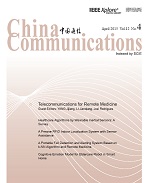REVIEW PAPERS
ZHU Songlin, GUO Yong, YIN Yongjia
2015, 1(4): 50-57.
Driven by ZTE and other telecom vendors and operators in order to meet the ever increasing bandwidth demand from fixed optical network users and mobile backhaul/fronthaul services, the latest next generation passive optical network (NG-PON2) is being standardized by Full Service Access Network (FSAN) and International Telecommunication Union (ITU-T) which consists of two separated sub-systems, hybrid time- and wavelength-division multiplexing PON (TWDM-PON) and point-to-point wavelength- division multiplex (PtP WDM). The TWDM-PON will be used for traditional residential, business and wireless backhaul services which are not sensitive to time delay and delay variation, whereas the PtP WDM is mainly used for emerging wireless fronthaul service which is very sensitive to the time delay and time delay variation. However, as a main international standards’ contributor, ZTE thinks for those operators who offer multiple-level of services to both residential, business and mobile backhaul/fronthaul users, this obviously raises significant economic and power concerns by demanding to deploy two separated systems. Therefore, in this paper, for the first time, ZTE proposes a new converged optical and wireless integrated network architecture and topology by applying orthogonal frequency division multiplexing (OFDM) PON technology, which is able to simultaneously support residential, business and mobile backhaul/fronthaul services in terms of meeting the requirements of both time delay sensitive and non-sensitive services, and also address the economic and power concerns compared with conventional technologies. This architecture is further investigated and analyzed in depth on functional block, Quality-of-service (QoS), synchronization and deployment considerations. Also ZTE reports in this paper the first 40Gbps OFDM-PON prototype in which eight wavelengths each with 5Gbps Ethernet data via 10G-PON encapsulation method (X-GEM) and 10G-PON transmission convergence (X-GTC) framing are demonstrated.
